Get insights.
Unlock value.
- 14-day free trial
- Set up in minutes
- No credit card required
Randomized Question Sets: A New Era of Dynamic Data Collection
The quest for accurate, reliable data has always been at the heart of successful data collection design. Understanding the need for adaptive and engaging data collection experiences, we've developed a system that enables you to present your respondents with dynamic, randomized question sets. This feature is designed to elevate the quality of your data collection and add an element of surprise that keeps respondents engaged.
For the data provider, the experience becomes more engaging and less predictable. They are encouraged to pay closer attention to each question and provide thoughtful, accurate responses.
From the perspective of the data collector, you have the opportunity to gather a wider range of responses and gain more comprehensive insights. It also makes your surveys more resilient against biases, leading to higher quality data. Whether you're collecting customer feedback, conducting academic research, or gauging employee satisfaction, this feature is a game-changer.
Randomize entire question set
Enable the 'question shuffle/randomization' option to randomize all the questions present.
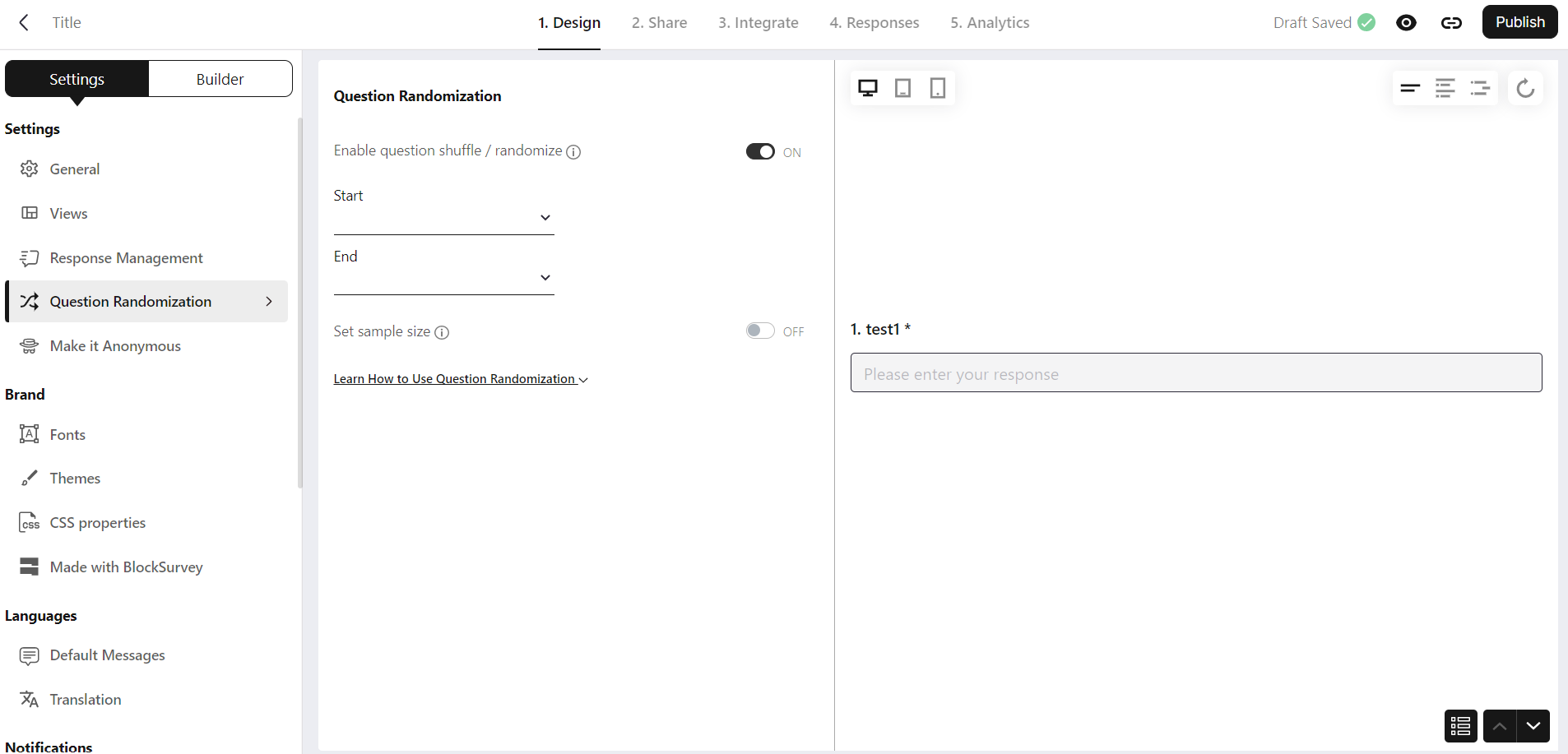
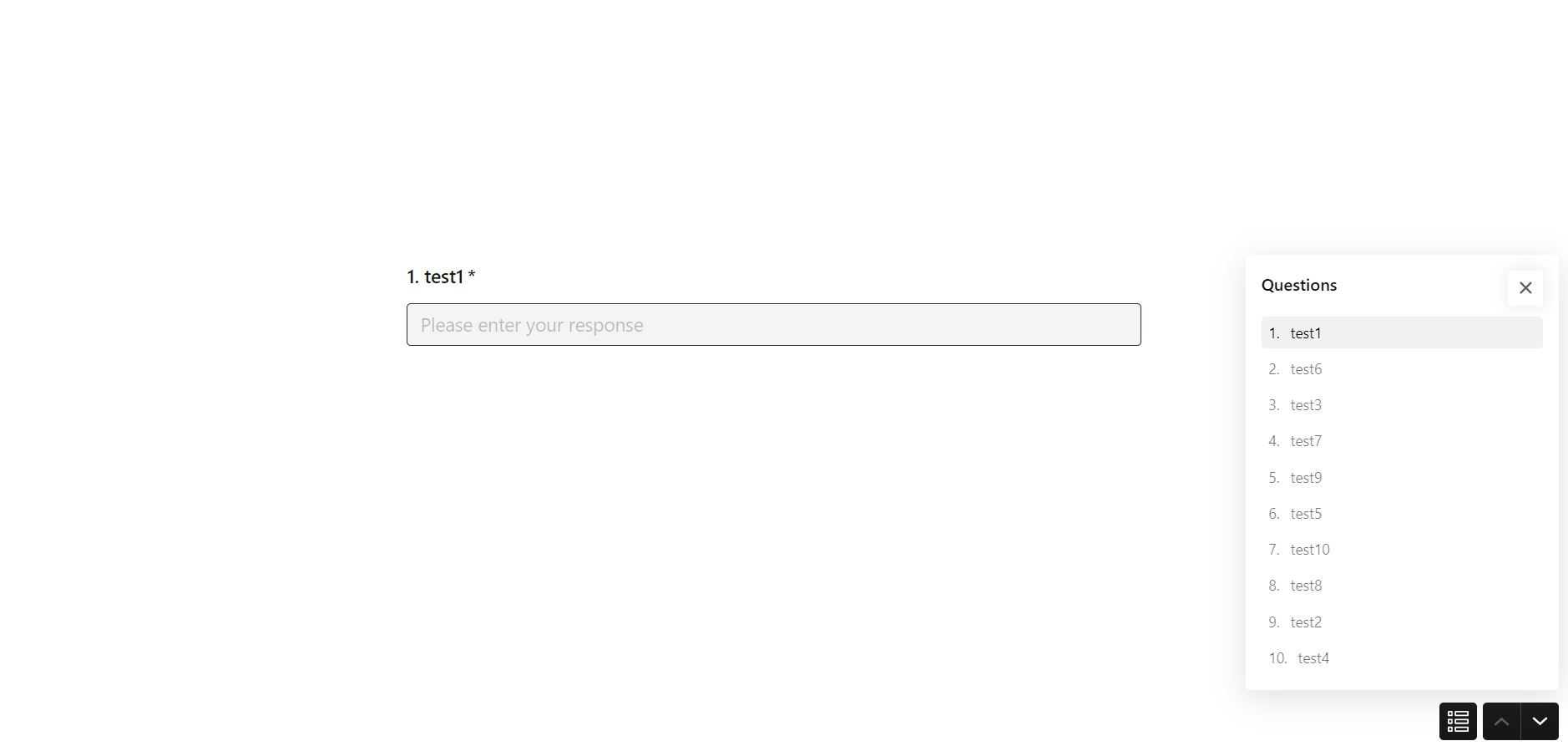
Randomize questions within a specified range
This option helps you extends beyond simply shuffling the order of your questions. It enables you to define a specific range within which the questions will be randomized. This means you can set a portion of your data collection method to remain static, while only randomizing questions within a specified segment. This level of control is perfect for data collection methods that require a set introduction or conclusion, with the main body of questions varying for each respondent. This tailored approach to randomization not only ensures the relevancy and coherence, but it also opens up a whole new realm of possibilities for data collection and participant engagement.
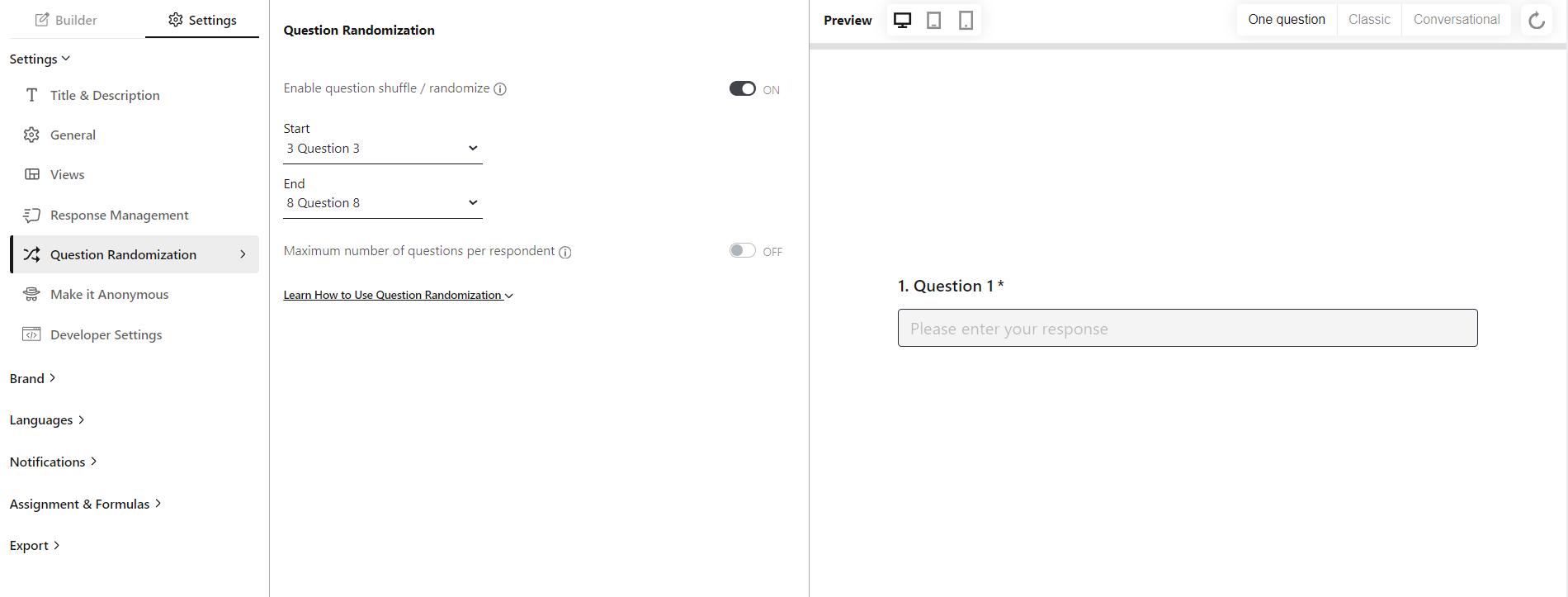
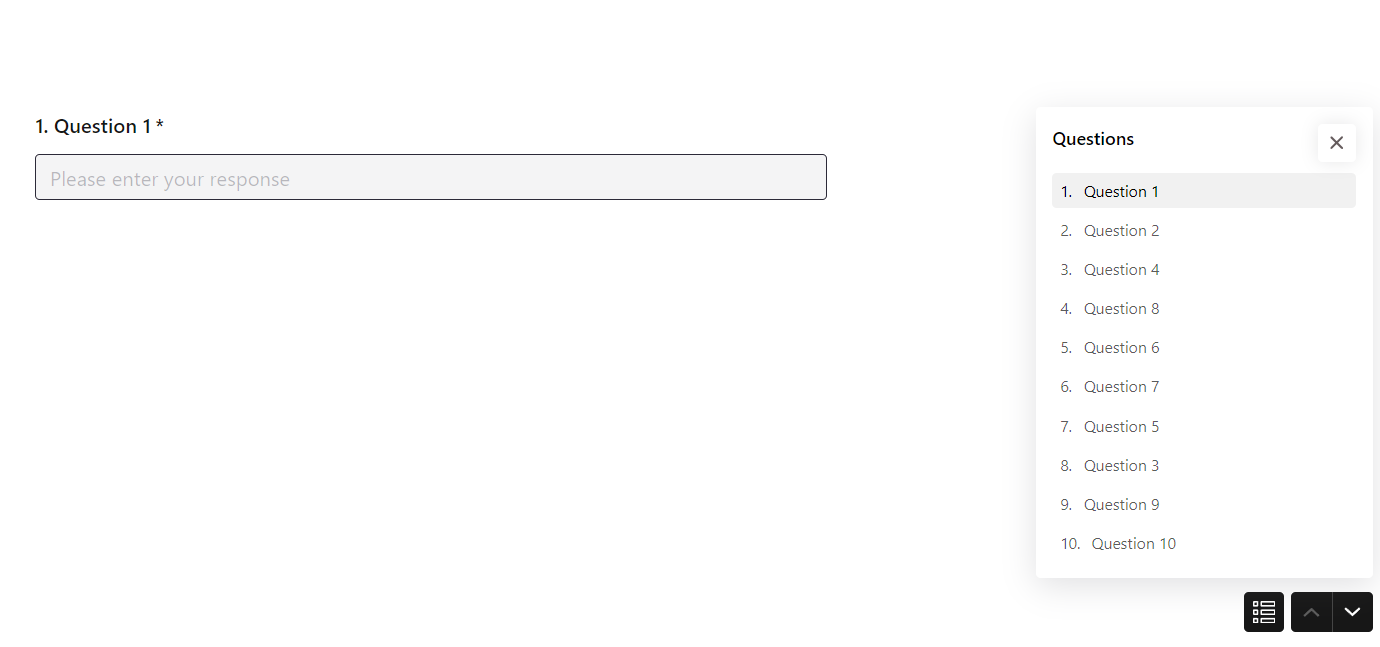
Sampling with randomization
Enable the 'Set sample size' option, and specify an appropriate sample size that fits your data collection needs. For example, if you have a 'Question Bank' containing 50 unique questions but want to present only a subset of 10 random questions to each respondent, you can simply set the sample size to 10. This offers both variety and consistency across your data collection method, helping to prevent fatigue and enhancing the response rate. It helps add versatility to your data collection, while maintaining control over your question selection.
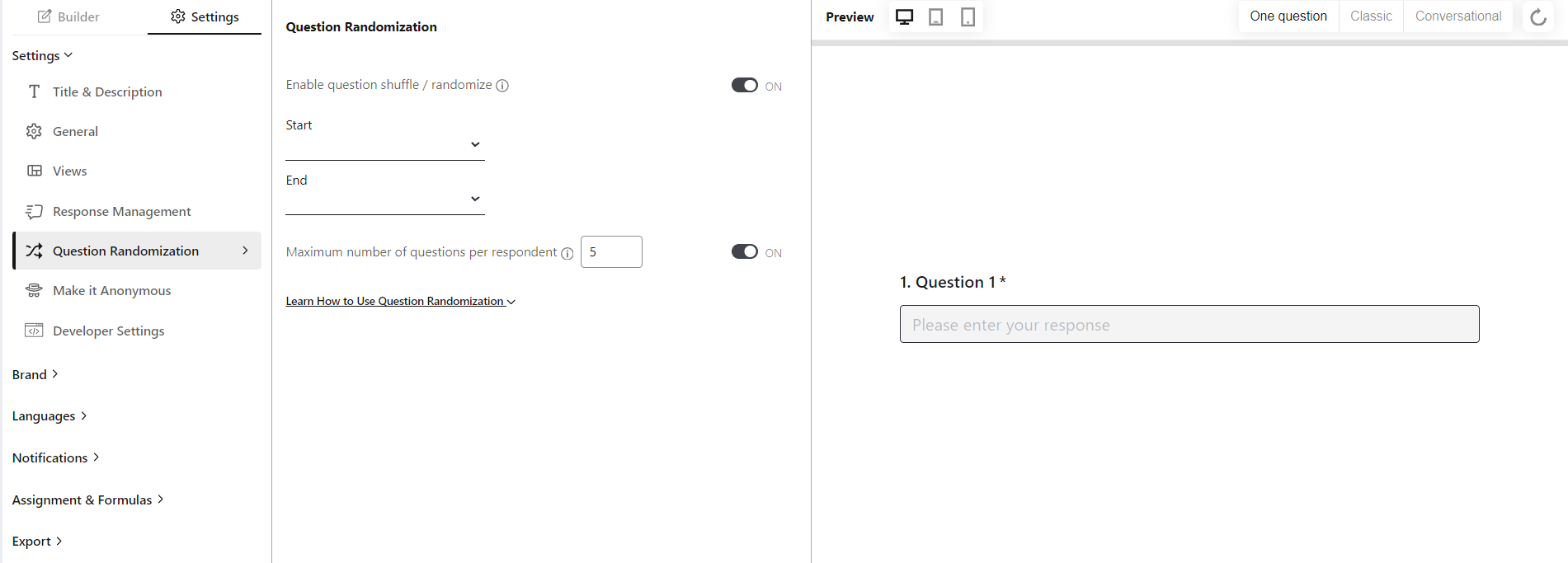
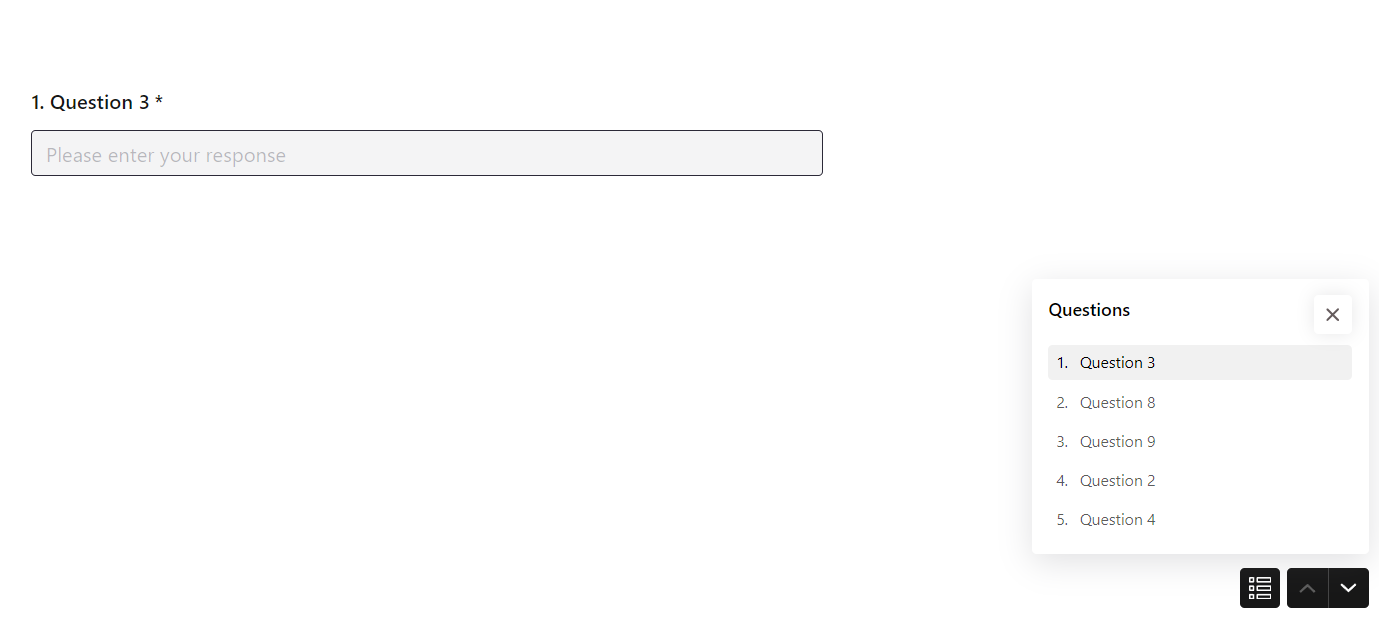
Sampling with randomization for a given range of questions
Mix and match Range based randomization and Sampling to generate samples from the specified randomized range of questions. The goal is to introduce variety in the response data and reduce response bias that may arise from question order effects.
For eg. Suppose there is a quiz with 10 questions, 'Start' and 'End' are set to 'Question 3' and 'Question 8' respectively, and 'Sample size' is set to '6', then sampling would take place within that range. Each Respondent would see 6 questions within the randomized pool from 'Question 3' to 'Question 8' along with 'Question 1', 'Question 2', 'Question 9' and 'Question 10'.
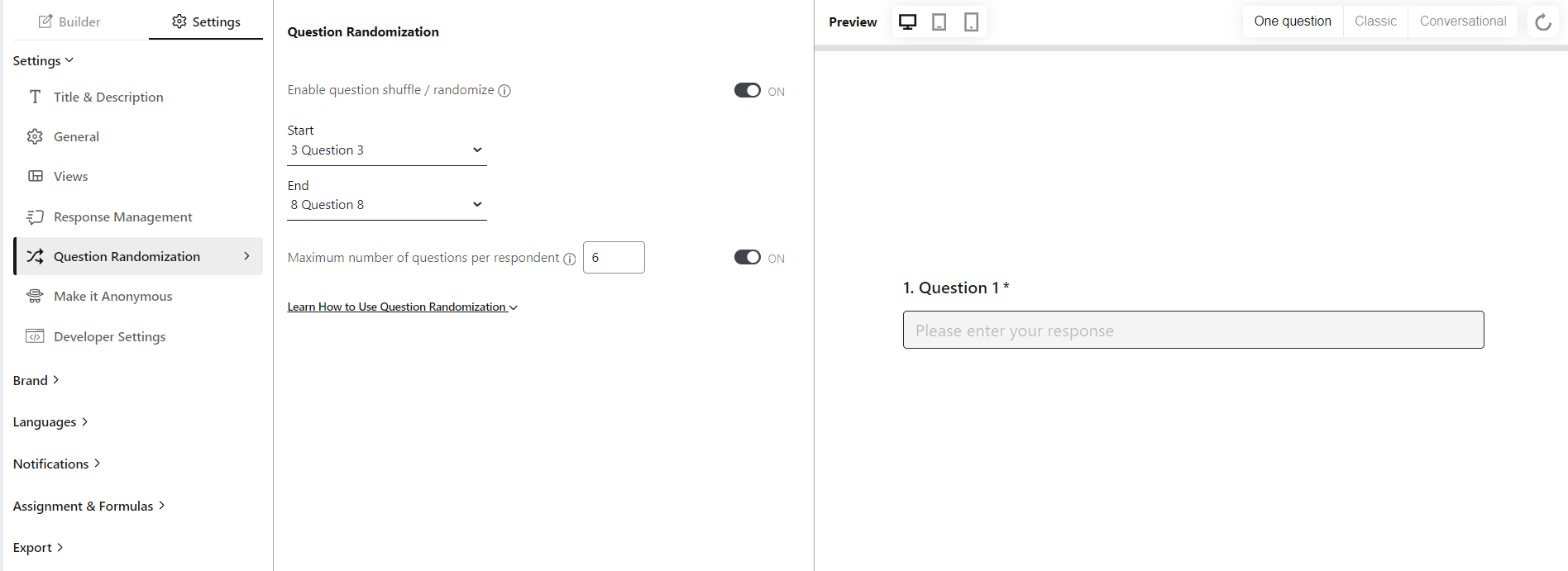
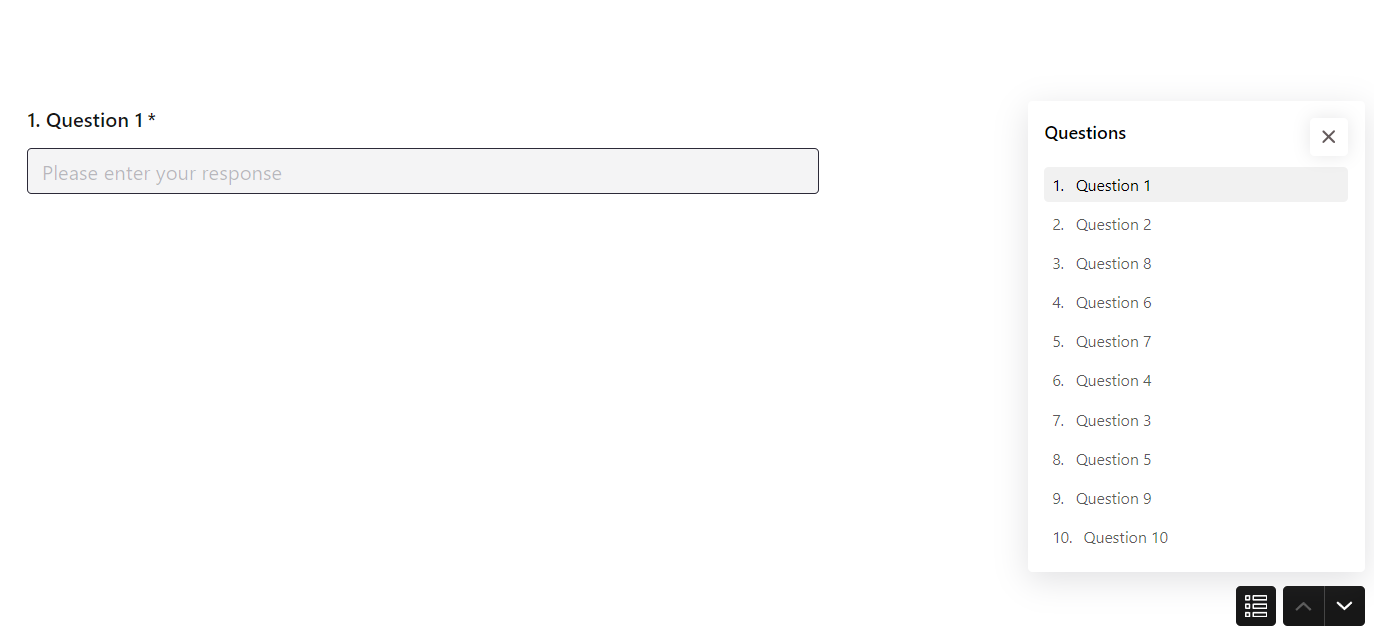
Another example scenario would be when there is a quiz with 10 questions, and 'Start' and 'End' are set to 'Question 3' and 'Question 6' respectively and 'Sample size' is set to '6', then 'Sample size' would be 'question 3 + question 4 + question 5 + question 6' i.e. '4' and not '6' as only 4 questions are available in the randomized pool.
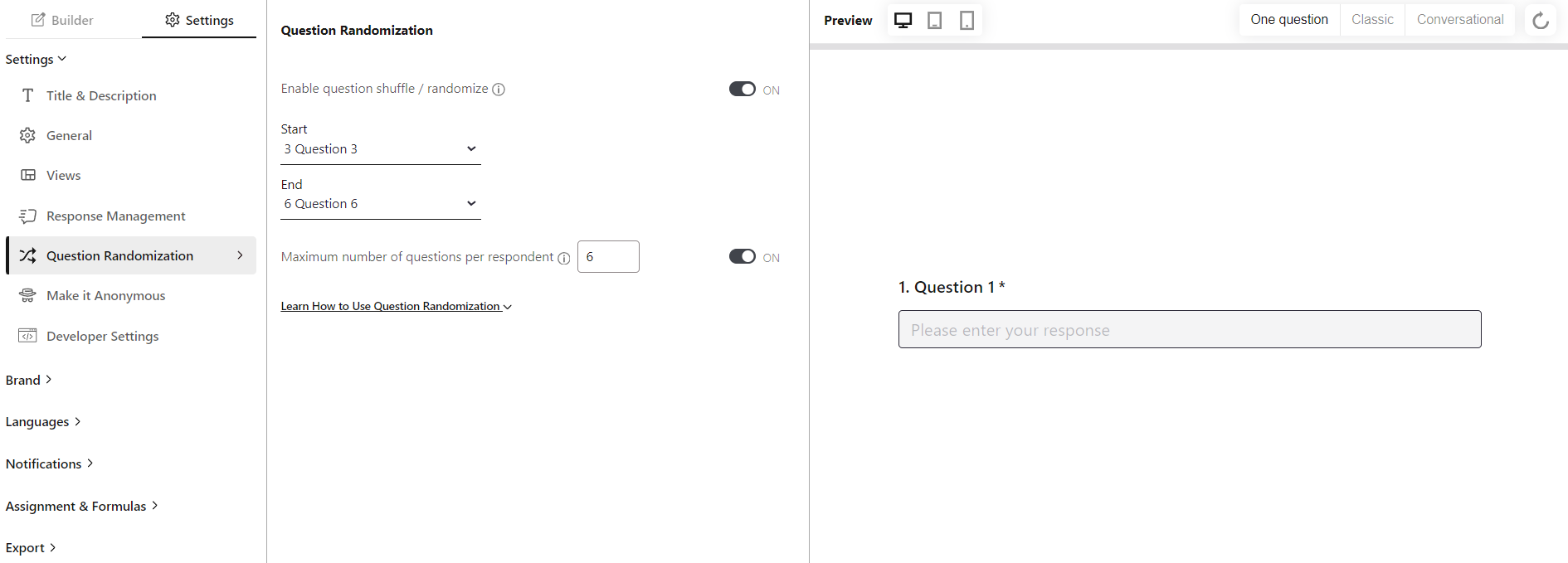

Conclusion
This innovative feature represents a significant stride in data collection design. No longer will respondents be confronted with the monotony of a static set of questions. Instead, they will engage with a dynamic and variable data collection experience powered by AI-powered dynamic surveys. The capability to randomize questions within a specified range not only enhances participant engagement but also ensures a more unbiased collection of data.
This flexibility and dynamism are essential for researchers aiming to delve deeper into their investigations and entrepreneurs looking to understand their customer base better. With the advent of Randomized Question Sets, we are indeed stepping into a new era of data collection, where quality of insights meets the efficiency of process, paving the way for a more intuitive, responsive, and effective way of gathering data.
Get insights.
Unlock value.
- 14-day free trial
- Set up in minutes
- No credit card required





